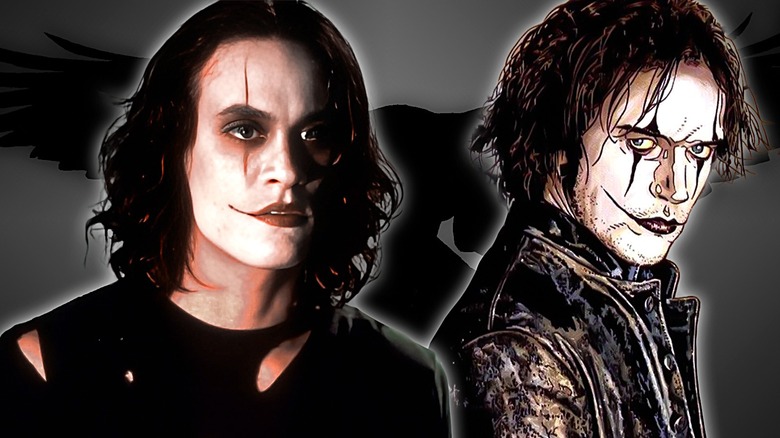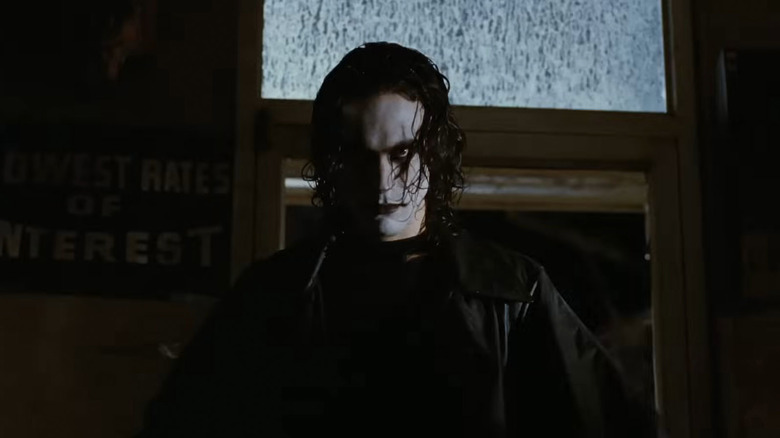The Crow Wears Makeup For A Tragic Reason
Feathers have already been ruffled following the arrival of Bill Skarsgård's new look in the remake of "The Crow," with fans making the same joke about the tattoos his character, Eric Draven, is brandishing. However, one thing that can't be criticized is the signature makeup style applied to Draven's morbid mug. Besides the classic dark attire that is essential for the Crow, Skarsgård can be seen with the iconic black stripes down his eyes and across his face, echoing the appearance of Brandon Lee in the 1994 cult classic movie and the various sequels and spin-offs that followed. Interestingly, the origins behind this flourish on the face are never explained in the 1989 comic series that the live-action iterations adapted. Instead, most of the Crows we've seen on screen have always worn makeup that shares some ties to either the lost soul they're avenging or their own.
In the original version of "The Crow," which tragically saw Brandon Lee die during filming, his iteration of Eric applies makeup that belonged to his late wife, Shelly (Sofia Shinas), in an almost twisted memory of her. The look is inspired by a masquerade mask hanging in their apartment, where their joint murder took place. This macabre case of revenge and grief would be repeated with other stories under the name "The Crow," although some weren't as impactful as others.
The Crow paints a face of vengeance
After Brandon Lee rocked the vengeful Edward Scissorhands look, Vincent Pérez took the lead in "The Crow: City of Angels" as Ashe Corven in 1996, who returns to life to avenge the death of his son. Set in the same universe as "The Crow," a now grown-up Sarah Mohr (Mia Kirshner) helps the new Crow in his mission, using the paint collection belonging to Ashe's dead son to give him the Crow look.
In the 2000 film "The Crow: Salvation," that classic smile and eye streaks come from much more visceral origins when Alex Corvis (Eric Mabius) is framed for murder and sentenced to death by electrocution. Rather than being painted on, the lines on his face and mouth are seared on when his execution goes awry, leaving scars and marks that resemble the original style. As for the shortlived 1998 television show "The Crow: Stairway to Heaven," Mark Dacascos' Draven can change his look at will, whereas Edward Furlong in the 2005 film "The Crow: Wicked Prayer" simply returns to wearing an outfit and a makeup look he wore prior to his death.
If Skarsgård's version of "The Crow" does follow the comics, his version of Draven might simply dive into the face-paints to give his back-from-the-dead return tour an extra kick. Then again, it would be cool to see him stretch his wings and have this version of "The Crow" add its own bit of vengeance-filled lore to a look simply too cool to die.

